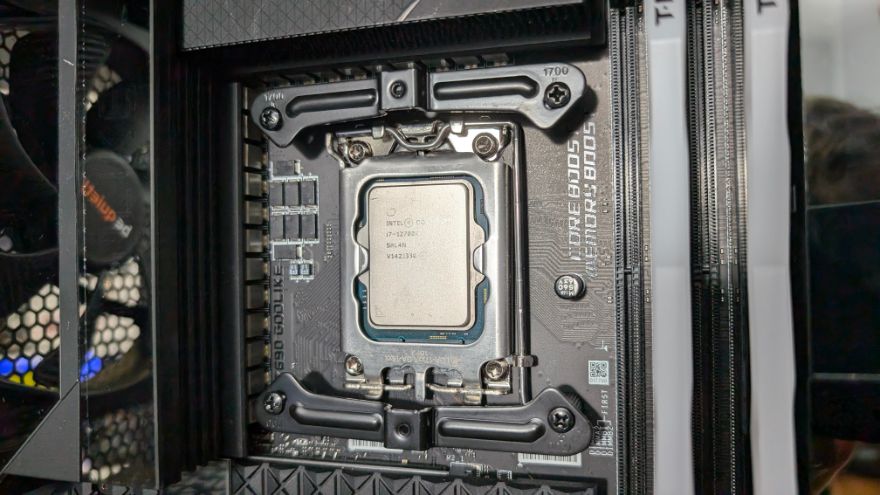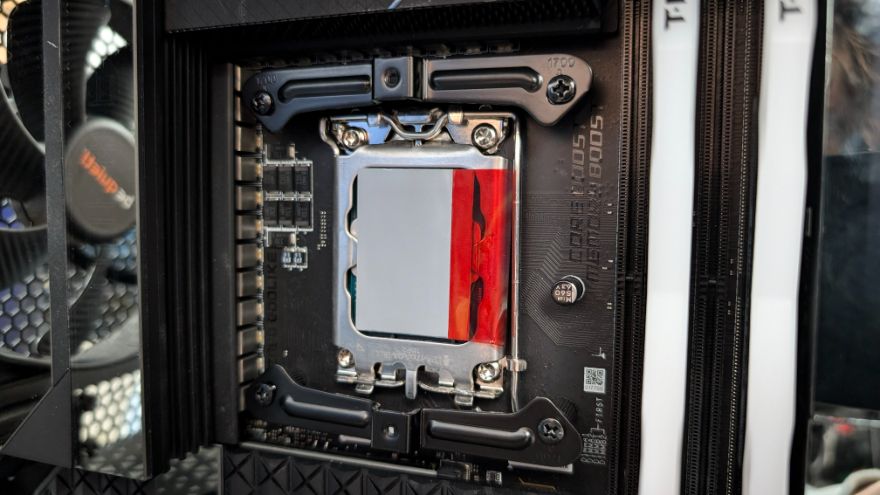How to Use Thermal Grizzly’s PhaseSheet PTM
Detailed Application Process

To ensure the best performance from your PhaseSheet PTM, follow these detailed steps:
- Preparation: Begin by thoroughly cleaning the surfaces of the CPU or GPU and the base of the heatsink. Use isopropyl alcohol and a lint-free cloth to remove any residual thermal paste or debris. This step is crucial for ensuring that the PhaseSheet PTM can make direct contact with the surfaces.
- Sizing: Measure the surface area of your CPU or GPU. The PhaseSheet PTM comes in various sizes, but you may need to cut it to match the exact dimensions of your component. Use a sharp pair of scissors for a clean cut. Ensure that the sheet covers the entire surface of the CPU or GPU without overlapping the edges.
- Application: Carefully place the cut PhaseSheet PTM onto the CPU or GPU surface. Take your time to align it correctly, ensuring complete coverage. The sheet should lie flat against the surface without any wrinkles or folds.
- Mounting the Heatsink: Position the heatsink or cooler over the CPU or GPU and gently press down to ensure even contact. Secure the heatsink as per the manufacturer’s instructions, making sure that it applies uniform pressure across the surface. This helps the PhaseSheet PTM to transition and conform to the surfaces effectively.
- Initial Operation: Upon first powering up the system, allow it to reach normal operating temperatures. The PhaseSheet PTM will undergo its phase transition during this period, becoming slightly liquified to fill any microscopic gaps. After this initial phase transition, the material will solidify again, maintaining excellent thermal contact.

Usage Considerations and Longevity
While the PhaseSheet PTM offers excellent thermal performance, it is designed for single-use applications. Once it undergoes its phase transition and conforms to the surfaces, it cannot be reused. This is an important consideration if you frequently upgrade or replace components, as you will need a new PhaseSheet PTM for each installation. This contrasts with the KryoSheet, which we’ve seen users using multiple times, making it more suitable for those who regularly disassemble and reassemble their systems though Thermal Grizzly don’t endorse this practice..

Additionally, the PhaseSheet PTM’s single-use nature means that it should be handled with care during installation. Ensure that the heatsink is properly mounted the first time to avoid the need for reapplication.
Comparing PhaseSheet PTM to Traditional Thermal Solutions
To fully appreciate the advantages of the PhaseSheet PTM, it’s helpful to compare it to other common thermal interface materials:
- Thermal Paste: Traditional thermal paste has been the go-to solution for many years. However, it requires careful application to avoid air bubbles and ensure even coverage. Improper application can lead to suboptimal thermal performance. The PhaseSheet PTM eliminates these concerns with its easy-to-apply design and phase transition properties, providing more consistent and reliable thermal conductivity.
- Thermal Pads: Standard thermal pads are easier to apply than thermal paste but often do not provide the same level of thermal conductivity. The PhaseSheet PTM combines the ease of use of thermal pads with the high performance of thermal pastes, thanks to its phase transition technology.
- KryoSheet: While the KryoSheet offers high thermal conductivity and can be reused, it is made from conductive graphene, which may not be suitable for all applications. The non-conductive nature of the PhaseSheet PTM makes it a safer choice for a broader range of components.
Practical Tips for Using PhaseSheet PTM
To get the most out of your PhaseSheet PTM, consider the following practical tips:
- Storage: Store unused PhaseSheet PTM in a cool, dry place away from direct sunlight. This helps preserve its properties until you are ready to use it.
- Handling: Handle the PhaseSheet PTM with clean hands or wear gloves to avoid contaminating it with oils or dirt, which could affect its thermal performance.
- Compatibility: Check the compatibility of the PhaseSheet PTM with your specific CPU or GPU model. While it is designed to be versatile, ensuring compatibility can help maximize its effectiveness.
- Monitoring: After installation, monitor your system’s temperatures to ensure that the PhaseSheet PTM is performing as expected. If you notice unusually high temperatures, double-check the installation to ensure proper contact between the components and the heatsink.
Exploring Advanced Thermal Solutions: Beyond the PhaseSheet PTM
Thermal Grizzly offers a wide range of thermal solutions, each designed for specific needs and applications. Understanding these options can help you make informed decisions when selecting the best thermal interface material for your system.
- Kryonaut Thermal Paste: Kryonaut is one of Thermal Grizzly’s flagship thermal pastes, known for its high thermal conductivity and ease of application. It is particularly well-suited for overclocking and high-performance systems, providing excellent thermal transfer to keep components cool under heavy loads.
- Conductonaut Liquid Metal: For extreme cooling needs, Conductonaut liquid metal offers unparalleled thermal conductivity. However, it is electrically conductive and requires careful application to avoid short circuits. It is ideal for enthusiasts and professionals looking for the highest possible thermal performance.
- Carbonaut Thermal Pads: Similar to the KryoSheet, Carbonaut thermal pads offer a reusable, high-performance alternative to traditional thermal pastes. Made from carbon-based materials, they provide excellent thermal conductivity and are easy to apply and remove.
- Hydronaut Thermal Paste: Hydronaut is designed for large-area applications and water-cooling setups. It offers good thermal conductivity and is easy to spread, making it a versatile option for various cooling solutions.
Case Studies: Real-World Applications of PhaseSheet PTM
To better understand the practical benefits of the PhaseSheet PTM, let’s explore some real-world case studies:
- High-End Gaming PCs: In high-end gaming systems, efficient cooling is crucial to maintain performance and prevent thermal throttling. A gaming enthusiast can upgrade their cooling solution by replacing traditional thermal paste with PhaseSheet PTM on both the CPU and GPU and will see a noticeable drop in temperatures, allowing for more stable performance and higher overclocking potential.
- Professional Workstations: Professional workstations used for tasks such as 3D rendering and video editing generate significant heat. A workstation user can switch to PhaseSheet PTM for their CPU and GPU cooling and due to the improved thermal transfer, it will reduce temperatures, leading to enhanced stability and reliability during prolonged, resource-intensive tasks.
- Compact Form Factor PCs: Small form factor (SFF) PCs often struggle with heat dissipation due to limited space for cooling solutions. An SFF PC builder can opt for PhaseSheet PTM to address thermal issues. The phase transition properties of the material ensure optimal contact and efficient heat transfer, resulting in a quieter and cooler system.
Future Developments in Thermal Interface Materials
The field of thermal interface materials is continually evolving, driven by the need for better performance and easier application. Thermal Grizzly is at the forefront of this innovation, and future developments may include:
- Improved Phase Transition Materials: Continued research into phase transition materials could lead to even better performance and more versatile applications. Future iterations of the PhaseSheet PTM might offer enhanced thermal conductivity and longer-lasting properties.
- Hybrid Thermal Solutions: Combining the best properties of different thermal interface materials, such as the phase transition properties of the PhaseSheet PTM with the conductivity of liquid metal, could result in hybrid solutions that offer exceptional performance and safety.
- Smart Thermal Interfaces: Advanced materials that can dynamically adjust their properties based on temperature and load conditions could provide optimal thermal management in real-time, improving efficiency and component lifespan.
- Environmentally Friendly Materials: The development of eco-friendly thermal interface materials that minimize environmental impact while maintaining high performance could become a priority, aligning with global sustainability goals.








